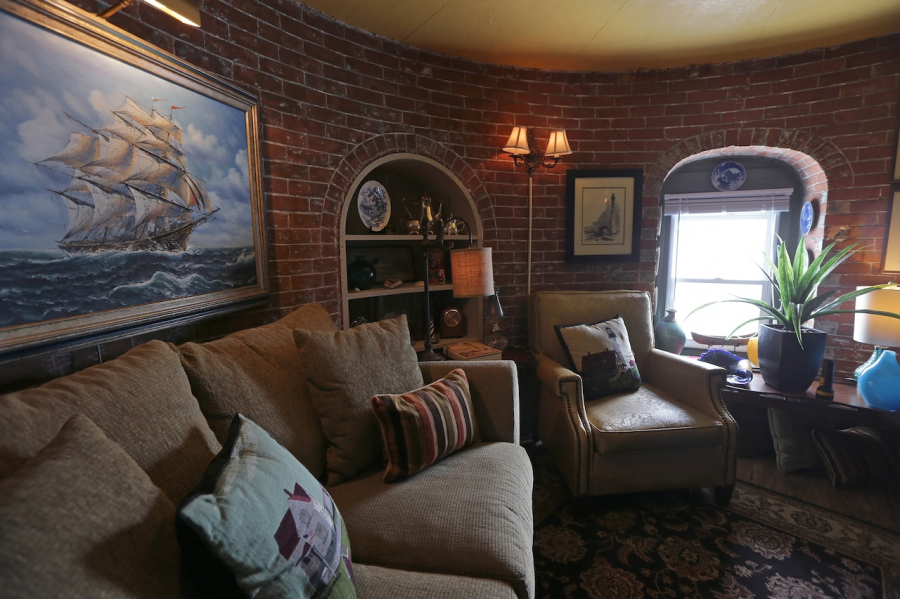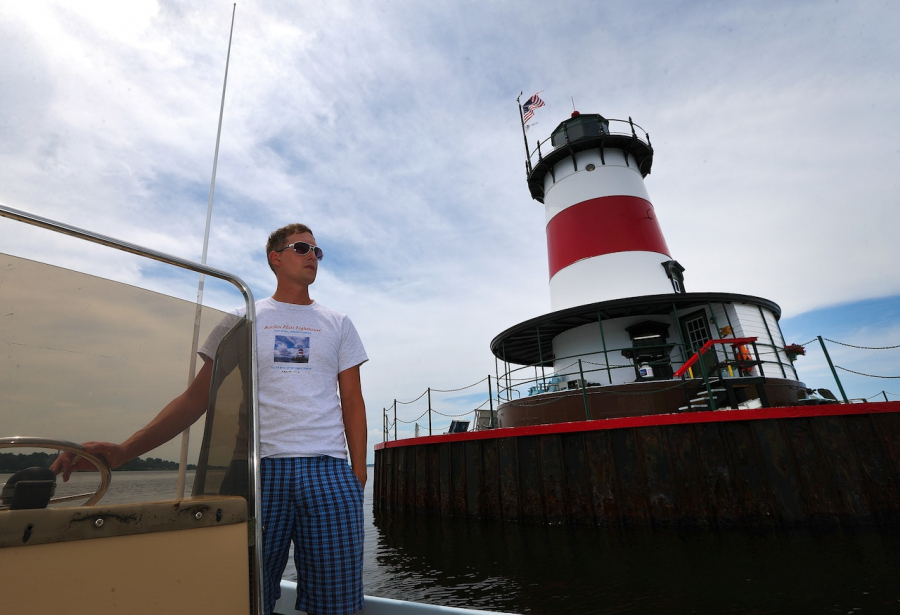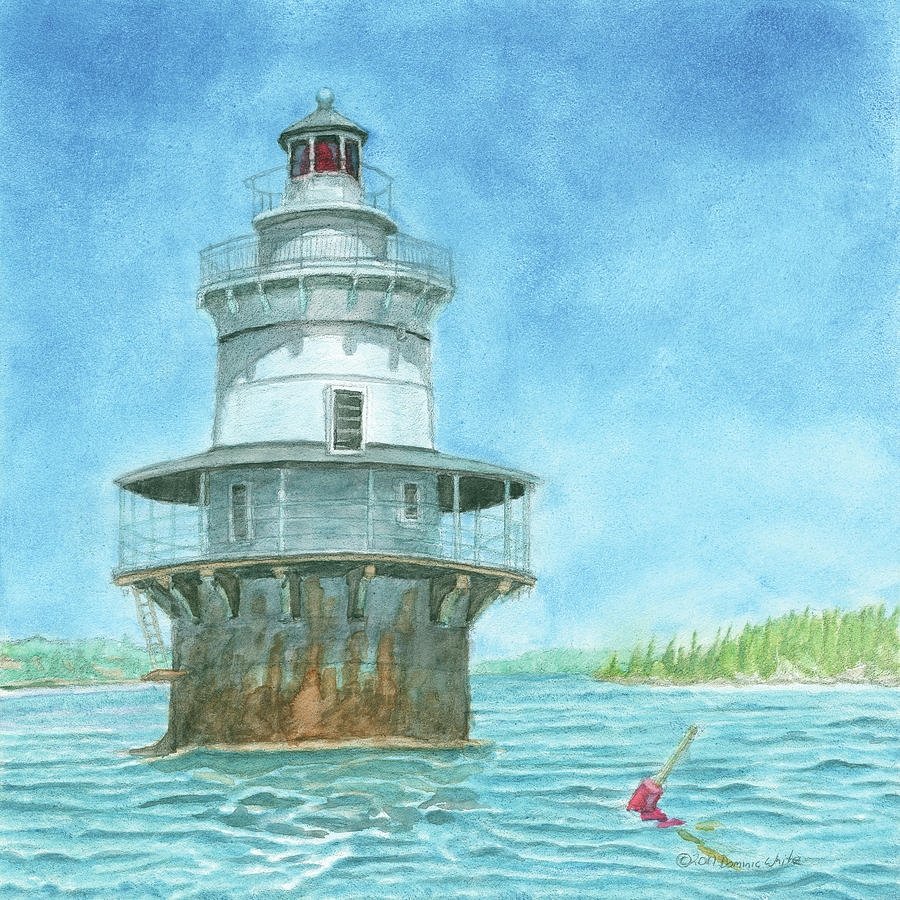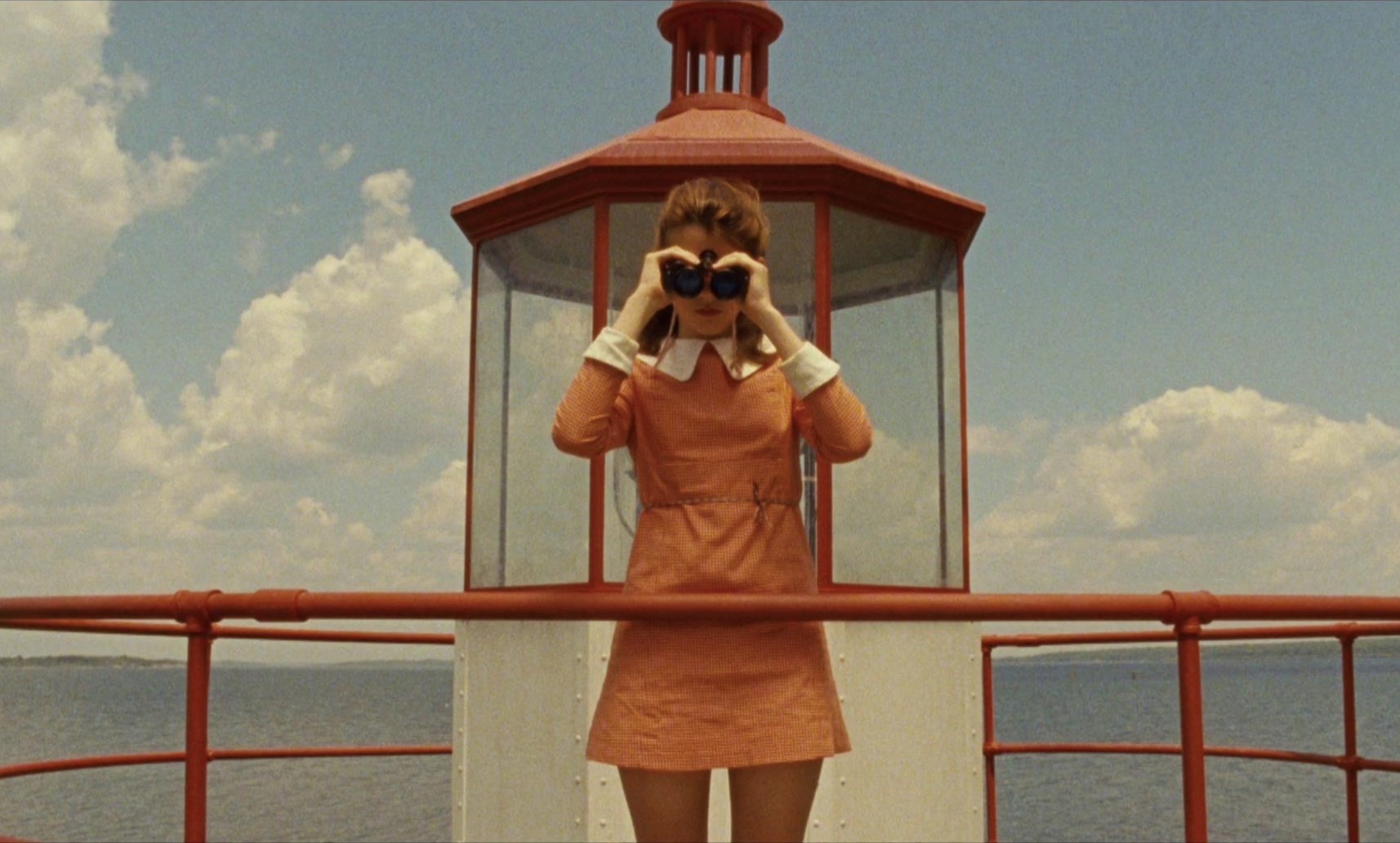Every moonrise, Lorraine Coyle walks up the five flights of stairs to the observation room at the top of the lighthouse.Borden Flats Lighthome- a lighthouse off the mouth of the Taunton River, located 457 meters from the Massachusetts coast. A New Yorker and frequent visitor to Borden Flats, Coyle, speaking of the lighthouse, recalls "the flag waving in the wind, the gulls circling at eye level, and the unmistakable sound of the foghorn."
Built in 1881, Borden Flats once guided steamboats into the bustling textile mills of Fall River Harbor. Today, it is one of only 40 lighthouse lodges in the United States, a special stop for travelers looking for a unique, secluded vacation surrounded by history.

A cozy living room inside the Borden Flats Lighthouse for overnight guests - Photo: Barry Chin, The Boston Globe/Getty images
“When we found out we could stay in a lighthouse, nothing could stop us,” says Coyle, who has stayed at four lighthouses and is certainly not the only one who has expressed interest. The popularity of this type of accommodation, especially during the Covid-19 lockdown, has meant that places like Borden Flats are likely to be completely booked out.
Many lighthouse hotels are the work of hobbyists who have purchased a lighthouse at auction; or given it away for free to private/community groups. This is a way to save lighthouses that have been neglected, eroded, exposed to the harsh weather of climate change, or made obsolete by sailors moving to more modern means of navigation.
Nick Korstad, who has acquired five lighthouses to renovate, including Borden Flats, said, “The sunsets, the sunrises, and the unique locations of these lighthouses are beautiful. But for me, the real romance is preserving the history of the people who dedicated their lives to keeping lighthouses, making sure that history is never forgotten. People love lighthouses, they love their spirit. It’s the thing that shines in the dark.”
In his own way, Korstard is one of the last remaining lighthouse keepers to this day.

Nick Korstad sails past Borden Flats Lighthouse, one of several lighthouses he purchased and renovated - - Photo: Barry Chin, The Boston Globe/Getty images
Steady beacon in the night
Coastlines illuminated by lighthouses once welcomed travelers and sailors to the land, signaling prosperity in trade and commerce. Lighthouse keepers were romanticized for their ascetic solitude, and were often seen as performing heroic duties.
The most famous lighthouse in the ancient world was built in the third century BC in Alexandria, Egypt. By the 19th century, Scottish civil engineer Robert Stevenson, grandfather of novelist Robert Louis Stevenson, had established standards for lighthouse construction, including the invention of a convex lens to focus and amplify light. He also builtBell Rock Lighthousein 1810, is now the oldest offshore lighthouse in the world. Over the next two centuries, he and his family built more than 90 lighthouses, many of which still stand today. Of the family's legendary technical innovations, Robert Louis Stevenson once wrote, "I could have worked until 1900 and not done mankind a greater service."

A replica of the Lighthouse of Alexandria (also known as the Pharos Lighthouse) - Photo: Fischer von Erlach
With the use of Fresnel lenses to magnify the beam of light for miles, thousands of lighthouses sprang up in the 1800s as solid walls that always glowed in the night, to warn ships of danger and guide them to safe harbor.
More durable than the tidal waves
One hundred years ago, there were about 1,000 active lighthouses in the United States. Now, only about 850 remain. After the invention of automatic solar-powered lights in the mid-20th century, lighthouses fell out of favor in the country. With the advent of GPS, they began to fall into disrepair. “We will lose some lighthouses in the coming decades, especially those that are far out at sea and inaccessible to tourists,” says Lighthouse Historian Jeremy D’Entremont. “Their importance will continue to decline as GPS and other electronic devices replace them.”
Today, most lighthouses are used only as a visual aid for boating tourists, and these magnificent towers are in danger of being lost forever.
“Many lighthouses still have the original wooden structure, eaves and gutters. Replacing them with thick vinyl or PVC would make them look awkward and uncomfortable, like a sore thumb,” says Korstad, who spends about $100,000 a year to keep his seven-bedroom bed and breakfast running.Big Bay Point Lighthouse- America's first lighthouse hotel (Bed & Breakfast or B&B for short is a type of accommodation that only provides guests with overnight accommodation with breakfast, usually not including other meals). Located on a 6.5 km long sandstone peninsula, Big Bay Point Lighthouse sits right on the emerald green rim of Lake Superior, and is one of 124 remaining lighthouses in Michigan - the state with the most lighthouses in the entire United States.

Big Bay Point Lighthouse after being renovated into a B&B - Photo: Internet
The densest concentration of lighthouses is along the rocky coast of New England, with about 200 in all, including another offshore lighthouse,Goose Rocks LighthouseThere are about 33 lighthouses in the Chesapeake Bay that have not been moved, flooded, or replaced with permanent lighthouses, but the water level there is also showing signs of rising faster than the global average.
Other lighthouses dot the Florida area and the rocky west coast, such as nHeceta Head Lighthouse B&Band hNew Dungeness Passin Oregon, where visitors can vacation in a National Wildlife Refuge atop North America’s longest sandbar. The National Historic Lighthouse Preservation Act of 2000 has allowed the transfer of many of the still-operating lighthouses. They are donated free of charge by the U.S. Coast Guard to local cities or nonprofits through the National Park Service. If there are no suitable owners, they are auctioned off to private individuals.
Once the transfer or sale is complete, the Coast Guard has the right to continue operating all active lighthouses, but is relieved of responsibility for caring for decaying lighthouses. The service can reclaim transferred lighthouses at any time, and has a list of preservation requirements that the groups must comply with.

"Goose Rocks Light at High Tide" by Dominic White - Photo: Pixels
“With limited funding and decades of neglect, coupled with changes in water levels and sea levels, many of the wave-tossed and precarious lighthouses along the coast are destined to fail in the battle of time,” said Bob Trapani, supervisor of the American Lighthouse Foundation.
Several groups have joined together to restore these historic structures, not only operating them as motels but also building them into museums to offset the costs. They have moved many lighthouses from the water’s edge to inland, for exampleCape Hatteras LighthouseNorth Carolina State Lighthouse - the tallest lighthouse in the United States - andGay Head Lightof Massachusetts. "We've come a long way, and every year we see more progress in lighthouse preservation," said Jeff Gales, a member of the American Lighthouse Society.
But for some lighthouses, help has come too late. Hawaii’s 86-foot-tall Kauhola Point Lighthouse was demolished in 2009 to prevent waves from toppling it off its cliffs and injuring people. New Jersey’s East Point Lighthouse and Oregon’s Tillamook Rock Lighthouse are barely holding their ground. Dozens of other lighthouses are abandoned or vandalized, awaiting lead paint removal, relocation, or repair. The city of Chicago is also planning to return the Chicago Harbor Lighthouse to the federal government, after it rotted for 12 years amid failed plans to turn it into a luxury hotel.

Tillamook Rock Lighthouse seen from the sky. The photo was taken after the lighthouse was declared decommissioned. Photo: Cannon Beach History Center & Museum
“It’s great that someone wants to take over these lighthouses, but a lot of times, nonprofits or municipalities see a lighthouse—a free gift—and think it’s a cash cow. After doing some research, they realize it’s just an old structure that doesn’t make any money, and it just sits there all year long,” Korstad says.
While the future of these lighthouses remains uncertain and hazy, one thing is clear, as clear as the lighthouse's light on a quiet night at sea, that you should spend at least a night or two in the bosom of these witnesses to history, while you still can.
“It connects [visitors] to the past,” says Korstad, “and takes them to a place they've never been before.”































